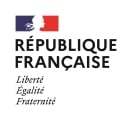Today, Agence France Trésor published a new environmental impact assessment report as part of the reporting on the expenditure funded by the Green OAT. The report deals with the subsidy granted to the French Waterways Office (Voies navigables de France, VNF), which manages the third largest waterway network in Europe, with 6,700 km of navigable waterways. The subsidy of €245 million per year is critical for the Authority’s operations and covers 57% of its budget.
The report highlights the environmental benefits of the waterway network and the special nature of its management. The network handles 2% of ground freight traffic that would otherwise be carried by road or by rail. The Report demonstrates that inland waterway transport prevents the emission of approximately 290 kilotonnes of CO2 each year, which is equivalent to 1% of the total annual emissions caused by freight traffic in France.
The report does more than present these numbers, it innovates with an analysis of the Office’s strategy for adapting to climate change and protecting biodiversity. It shows the different ways that the Office goes above and beyond regulatory requirements by optimising its infrastructure maintenance techniques and by stepping up its efforts to mainstream biodiversity concerns.
This assessment by the teams from the Office of the Commissioner General for Sustainable Development was overseen by the Green OAT Evaluation Council, which is made up of independent green financing and environmental policy experts. The Council defined the methodological framework for the study and appointed two independent assessors, François Combes (French Institute of Science and Technology for Transport, Development and Networks, IFSTTAR) and André Evette (National Research Institute for Science and Technology, IRSTEA), to ensure transparency and compliance with academic standards.
The Council approved the assessment findings, commending the quality of the report and the inclusion of two sections:
1. a quantitative estimate of the contribution waterway transport makes to fighting climate change;
2. a qualitative analysis of adaptation to climate change and protection for biodiversity.
The second section constitutes a major methodological contribution to impact assessment studies for green bonds.
Anthony Requin, Chief Executive of Agence France Trésor stated, « The Green OAT, which reached this year a €20 billion outstanding, has been a successful market experience. Last year, the Evaluation Council’s first report dealt with the Energy Transition Tax Credit. This second report upholds the lasting commitments that France made in terms of environmental impact assessment when it first issued the Green OAT in 2017. We remain committed to growing our programme and supporting the Green bond market. »
Download the full Impact Assessment Report on the Subsidy to the French Waterways Office (3 303 Ko)
Download an overview of the Impact Assessment Report on the Subsidy to the French Waterways Office (1 206 Ko)
Background
On 24 January 2017, Agence France Trésor launched the largest and longest-dated green benchmark bond ever issued, the Green OAT 1.75% 25 June 2039, whose outstanding amount has now reached €20.7 billion. The Green OAT issues fund eligible green expenditure under France’s environmental and climate policy.
This green expenditure must meet one of the Green OAT’s four objectives: combating climate change, adapting to climate change, protecting biodiversity, and reducing pollution. To meet these four objectives, the programmes eligible for Green OAT funding fit into six major sectors: buildings, energy, transport, living resources, pollution and adaptation.
When the Green OAT was first issued, the French government committed to reporting on the environmental impact of this expenditure. This commitment is entirely new for the green bond market and helps establish rigorous standards on this market. The Green Bond Evaluation Council supervises this reporting initiative.
Chaired by Manuel Pulgar Vidal, former Minister for the Environment in Peru, president of UNFCCC COP20 and WWF Global Climate and Energy Practice Leader, the Green Bond Evaluation Council is made up of six other independent experts:
• Mats Andersson, vice chairman of Global Challenges Foundation and former CEO of AP4, Sweden’s fourth national pension fund
• Nathalie Girouard, head of the Environmental Performance and Information (EPI) division, OECD
• Ma Jun, director of the Center for Finance and Development and special adviser to the Governor of the People’s Bank of China
• Karin Kemper, Global director, Environment, Natural Resources & Blue Economy, World Bank
• Thomas Sterner, professor of environmental economics, University of Gothenburg
• Eric Usher, head of the UNEP Finance Initiative
In addition, the Council has two outside observers:
• Sean Kidney, co-founder and CEO, Climate Bonds Initiative
• Nicholas Pfaff, senior director, Market Practice and Regulatory Policy, ICMA (International Capital Market Association)
The Green Bond Evaluation Council establishes a schedule and specifications for the environmental impact reports on eligible green expenditure matched to France’s Green OAT issuance. It also issues an opinion on the quality of impact reports and the relevance of their findings. The General Commission for Sustainable Development (CGDD) and DG Trésor jointly act as the Evaluation Council’s secretariat.

